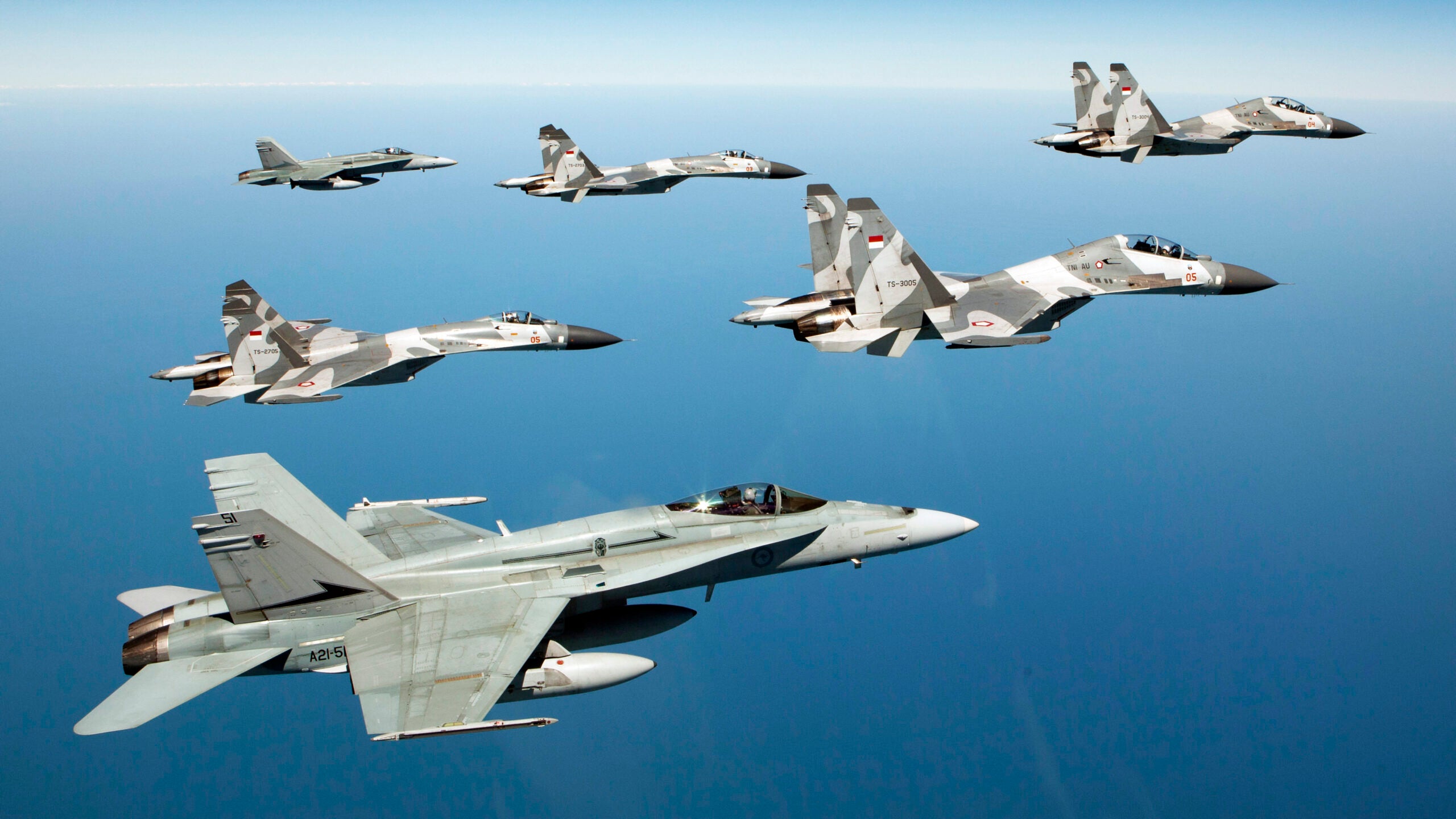Australia’s premier large force aerial combat exercise Pitch Black isn’t happening this year. So, we should be thankful that the Royal Australian Air Force has taken the opportunity to dredge through its extensive media archives to present some of the highlights from past editions. There’s some real stand-out content, too, in the form of candid and fascinating recollections from some of the air combat pilots who have taken part in the maneuvers over the years.
Pitch Black is normally run every two years and the planned 2020 iteration was expected to be one of the most interesting yet, promising participation from the Japan Air Self-Defense Force and Republic of Korea Air Force. Both would have been making their debuts at the event, which was to be held between late July and early August. However, the ongoing COVID-19 pandemic restrictions saw the Royal Australian Air Force’s (RAAF) major international air combat exercise canceled back in May.
Taking the place of showcasing live maneuvers, the RAAF has instead launched its #ExPitchBlackOnline campaign in the last few weeks. As well as recognizing all those participants in Pitch Black’s 39-year history, one of the air arm’s press officers describes the initiative as “scratching that itch” for service personnel and enthusiasts missing their regular fix of airpower.
It’s well worth taking a look at the RAAF’s Facebook account, where most of this content has been collated, but there’s much more besides that.
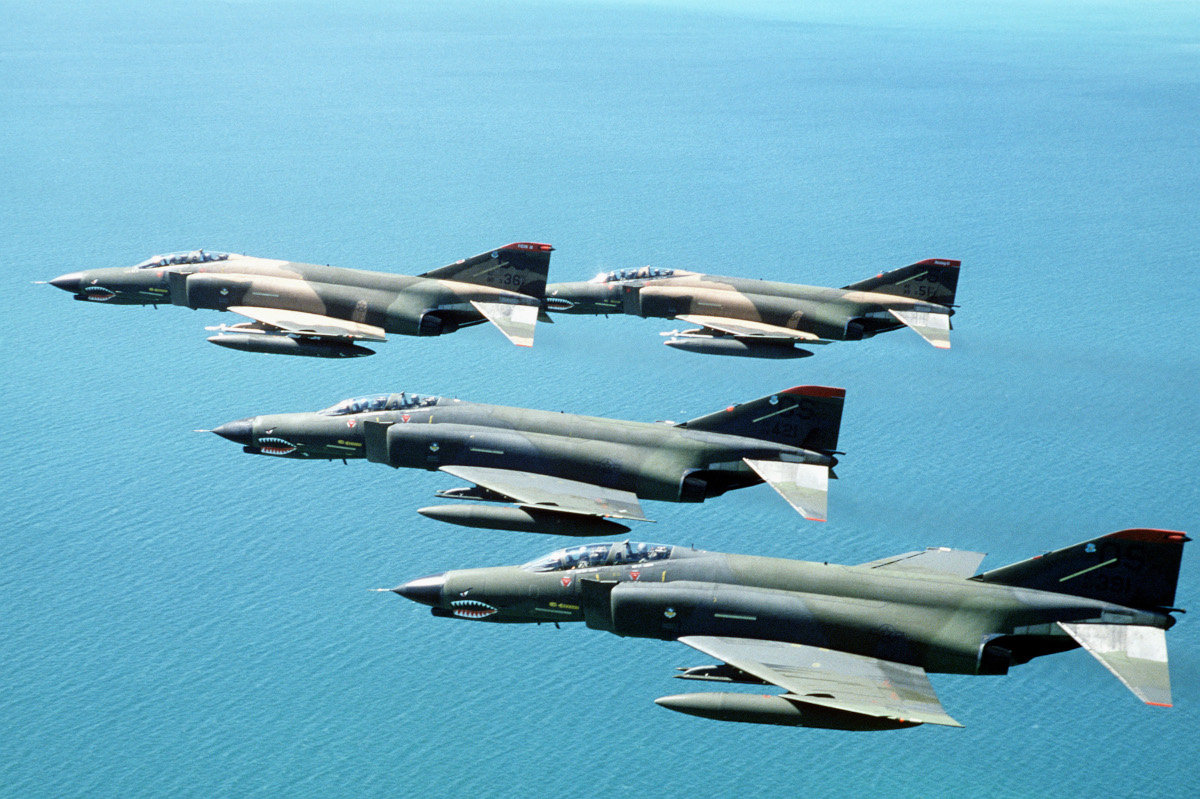
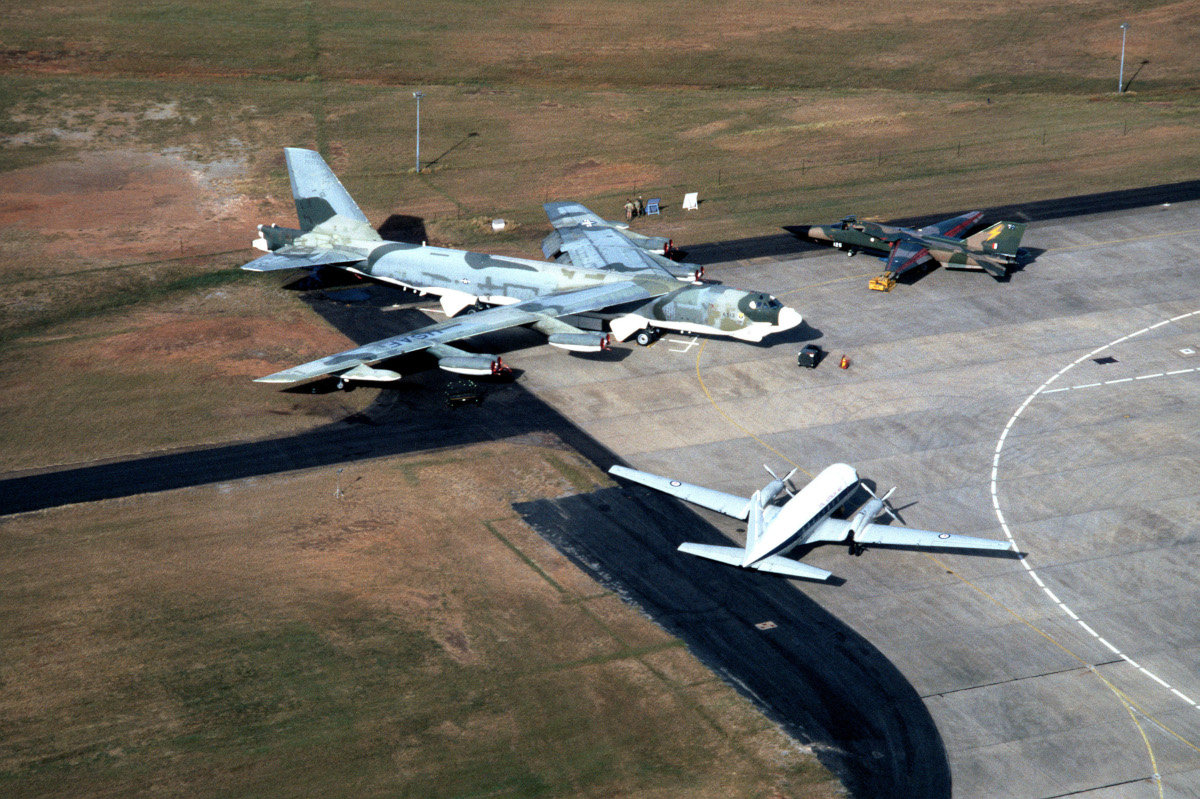
The media campaign was kicked off by Air Commander Australia, Air Vice-Marshal Joe Iervasi, with a video, seen below, on the Royal Australian Air Force’s YouTube and Facebook channel.

Iervasi reflected on his own experiences of Pitch Black, beginning with his first taste of the aerial war games in 1997. After flying tours on RAAF ‘Classic’ Hornets and an exchange posting on the Royal Air Force’s Tornado F3 swing-wing interceptor, he was struck by the sheer scale of the exercise.
“I remember the first time I stepped onto the flight line at Darwin, just to see so many air combat aircraft from all over the world, and going ‘wow, we’re all going to be airborne at the same time in that airspace’,” Iervasi said. “The key lesson I learned from those early days is get your head out, and have a look around, because chances are you’re going to see someone coming before the radar finds them as well.”


It’s not just the 85,000 square miles over Australia’s Northern Territory that are available to aircrews, they can also hone their fighting skills in another 10,000 square miles of airspace over the Arafura Sea, northeast of Darwin.
“It’s the best airspace in the world to do it — as we say, you’ve got from the surface to the moon, [you can go] supersonic, and it’s got a great tactical training range there as well, dropping live or inert weapons, you can get shot at from an aircraft, you can get shot at from the ground — simulated or simulated live,” Iervasi enthused.
Iervasi was back at Exercise Pitch Black in 2008 as Commanding Officer of No. 3 Squadron, leading F/A-18 Hornets at RAAF Base Darwin. He also took part in the 2012 and 2016 editions, both times in different command roles, latterly as Commander Task Force 640 — responsible for the entire airborne contingent.
The air vice-marshal also recalled the time that mission planners borrowed callsigns from the 1991 comedy film Hot Shots back in the late 1990s. “There were a couple of missions where we gave people the opportunity to make their own callsigns up,” he said.
“There was a replication of a few of the callsigns [from Hot Shots] — there was ‘Fluffy Bunny Feet,’ which is kind of difficult when you’re trying to check in a dozen aircraft, and ‘Fluffy Bunny Feet Two, Three, Four’ check in,” Iervasi continued. “It was just enjoyable to play around with that, but in terms of the professionalism of the actual operation itself, it was always there.”
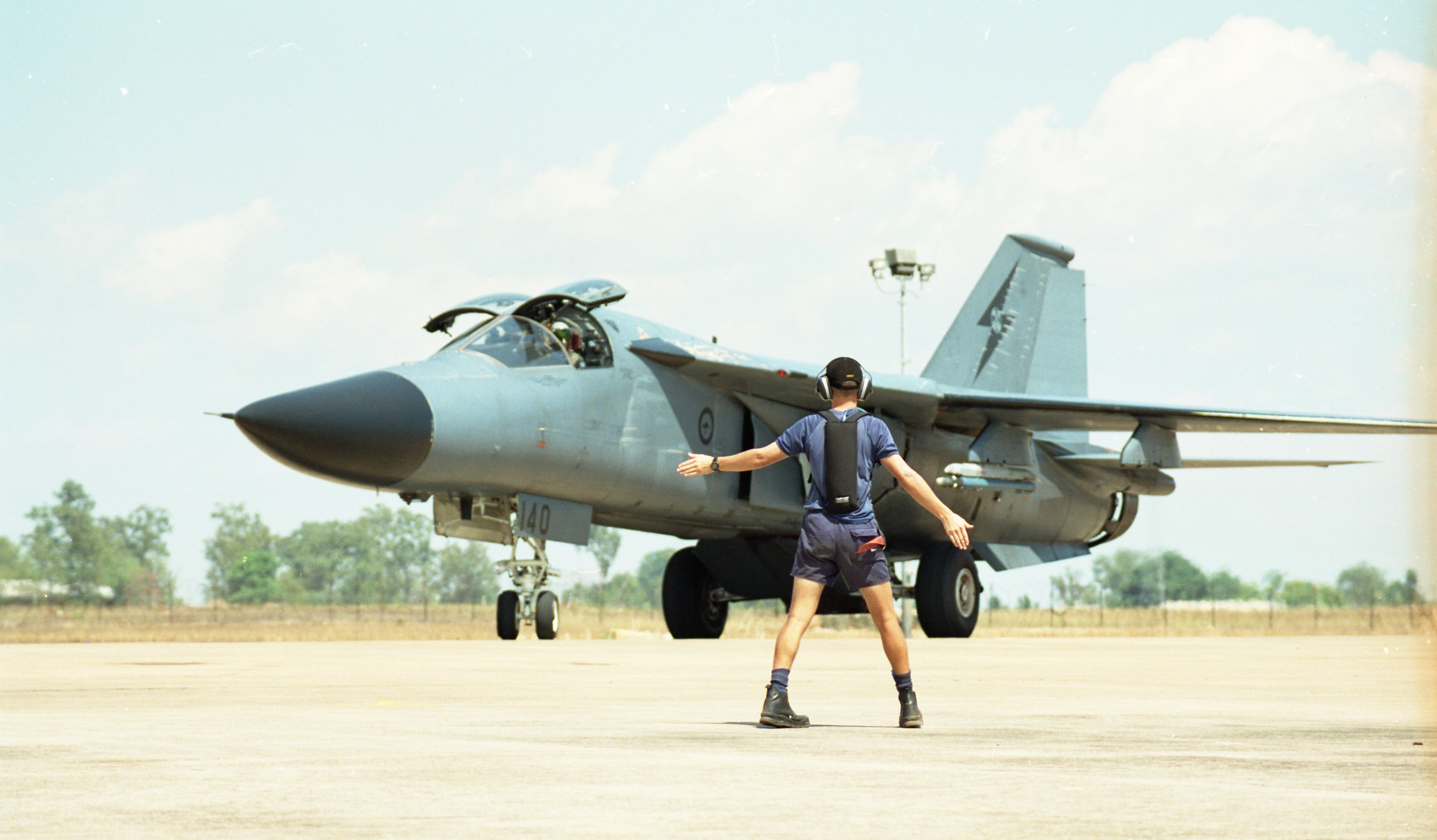
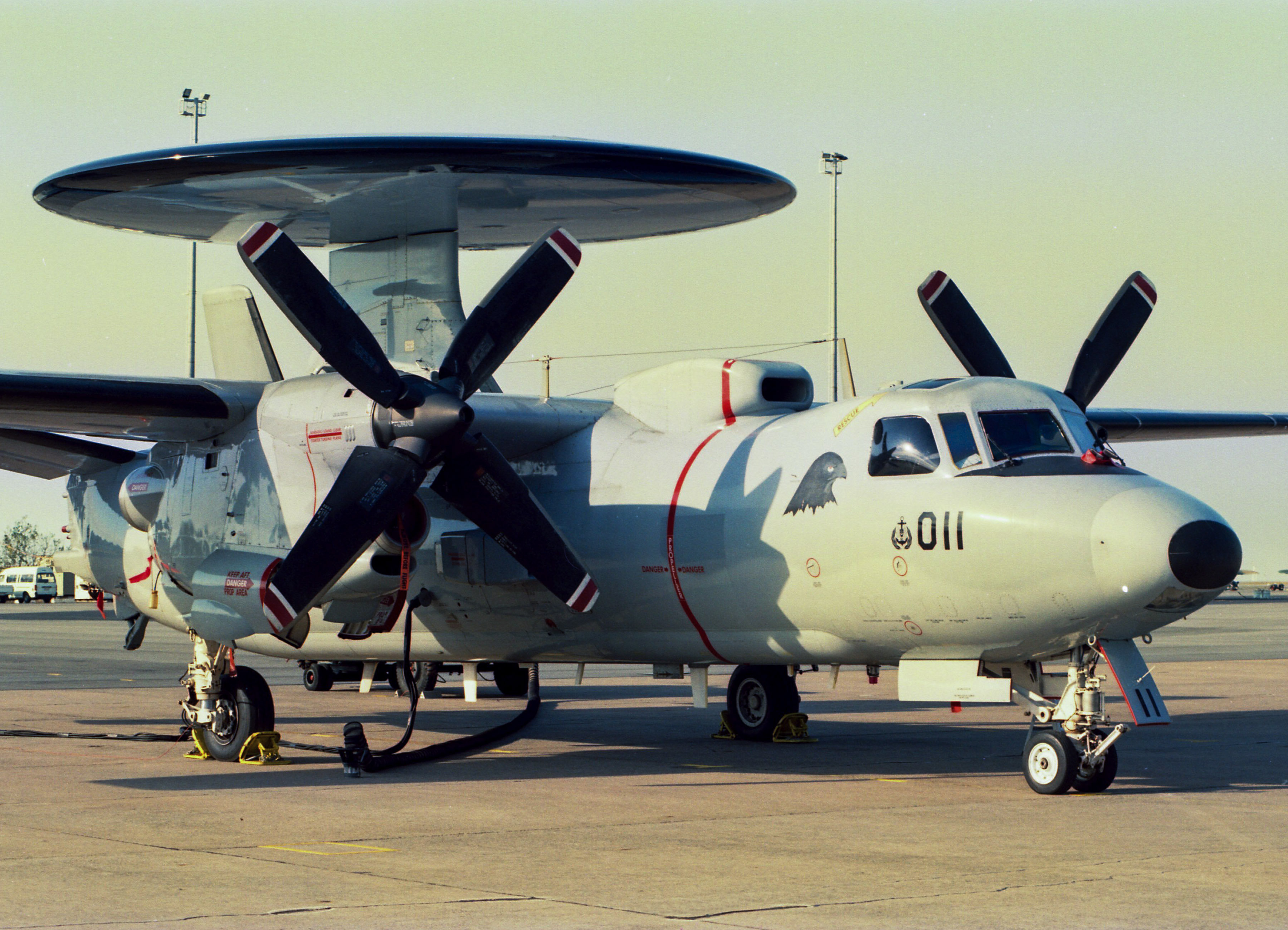

Delving deeper into the history of Australia’s flagship exercise, the RAAF has also brought together an exhaustive breakdown of each Pitch Black exercise since it began in 1981.
When it first kicked off at RAAF Base Williamtown, New South Wales, in June 1981, Pitch Black was a pure air defense exercise for the charismatic delta-wing Mirage IIIO fighters from No. 77 Squadron. They were tasked with fending off attacks by RAAF No. 1 Squadron F-111C Aardvark strike aircraft.
Air Vice-Marshal (retired) John Quaife’s career includes flying Mirage and Hornet fighters in Pitch Black, although his initial exposure to the exercise was with the diminutive MB326 “Macchi” lead-in fighter trainer in 1982. He flew six ‘target’ profiles out of RAAF Base Richmond, two of those sorties at night.
“In 1982, Pitch Black was a Sector Air Defence Exercise (ADEX) designed to exercise the air defense sector as it was established at Williamtown — that meant exercising the alert-detect-scramble-intercept kill chain, with an emphasis on night flying. As pilot of a Macchi ‘target’, my job was to simply fly a pre-planned route out of Richmond that entered the Williamtown airspace from the North West. Along the way, I would be intercepted by Mirages scrambled out of Williamtown, no doubt launching from an alert posture in the Willy Operational Readiness Platform.”
“There was no free play (in the exercise). I have no idea who was calling the shots, but I suspect it was the Sector Air Defence Commander, and in those days we used to have such things as SADOC (Sector Air Defence Operations Centre) executive courses to teach people how to do that stuff.”
“My next Pitch Black experience was in 1988. By this time I was a Hornet FCI flying with No. 77 Squadron. Five out of my seven exercise events were flown at night. By 1988, the exercise had shifted to Darwin but it was still an Air Defence Exercise. This meant the defenders were the good guys (Blue), with the attackers playing the bad guys (Red). My logbook shows me that there was a United States Air Force F-15 outfit in town playing adversaries. Because the exercise was (centered) on Air Defence, it was very much a ‘clean’ exercise of RAAF air defense capability — no allies played on the Blue side. It’s worth noting that F-111s were always Red Air.”
“I next flew a Pitch Black in 1991 as FCI with No. 75 Squadron. I flew 12 missions all labeled Vital Area Defence (Darwin) with four of them flown at night. Once again, visiting USAF F-15s flew as Red Air. By now I was beginning to think Pitch Black was getting a bit tedious.”
“We had excellent airspace, we had an exercise that included complex scenarios flown at night (no one else was doing that), but we had a purpose-built F/A-18 base at Tindal that was not being exercised, we were only beginning to think about developing Delamere Range, and we were still spending hours on alert practicing moving up and down the alert posture.”
“When we got airborne, we would spend many hours going around and around a CAP station — you would consider yourself lucky if you got to intercept anything. There was no real debrief or attempt to analyze outcomes and there was certainly no kill removal (where participants who are ‘shot down’ are required to leave the airspace).”
“By Pitch Black 2002, I was now Commander Air Combat Group (ACG), I was the Officer Conducting the Exercise, so I changed the rules. I converted Pitch Black from an air defense exercise into a strike exercise.”
“In developing the exercise, we tried to maintain the good bits from the previous incarnation, but avoid some of the bad stuff. Exercise Pitch Black 2002 was the first Pitch Black where we were able to exercise Air Combat Group as a Group with F-111 and F/A-18 finally working together. We certainly kept the night serials.”
“The exercise in 2002 was flown on the East Coast with No. 75 Squadron Hornets deployed to Amberley (the Republic of Singapore Air Force also participated that year). This was the exercise that generated some ‘crinkly faces’ in the planning conference because it was the first time that we changed the roles of Red and Blue Force. In 2002 we had just returned jets from the Diego Garcia deployment, and we would soon deploy No. 75 Squadron in early 2003 to the Middle East Area of Operations. There was a bit going on.”
“Exercise Pitch Black 2002 involved some heavy planning in order to generate enough overland airspace (additional Training Areas off the top of the Richmond airspace was included too, as I recall). Out of that experience, we realized that we should retain an exercise as an annual event, but keep one focused on air defense (in odd years) while the bigger Pitch Black exercise (in even years) got heavily into the complex offensive exercise that it has become.”
“We kept the exercise to a planned daytime and nighttime event, which meant we could control activity through ‘periods of vulnerability’ and, as long as the players stayed within the ‘VUL Time’ (VUL meaning Vulnerability Window — the time period when the exercise was ‘active’) they could free play their tactics. Moving off the ADEX script also gave the air defenders an asset management challenge that had been missing in scripted exercises. De-emphasizing air defense also gave the exercise a lot more meaning and value for the participation of other Force Element Groups.”
Quaife talks more about how the exercise has changed since then — as well as his experiences of other wargames, including the U.S. Air Force-led Exercise Cope Thunder, the forerunner to Red Flag-Alaska — in this interview.
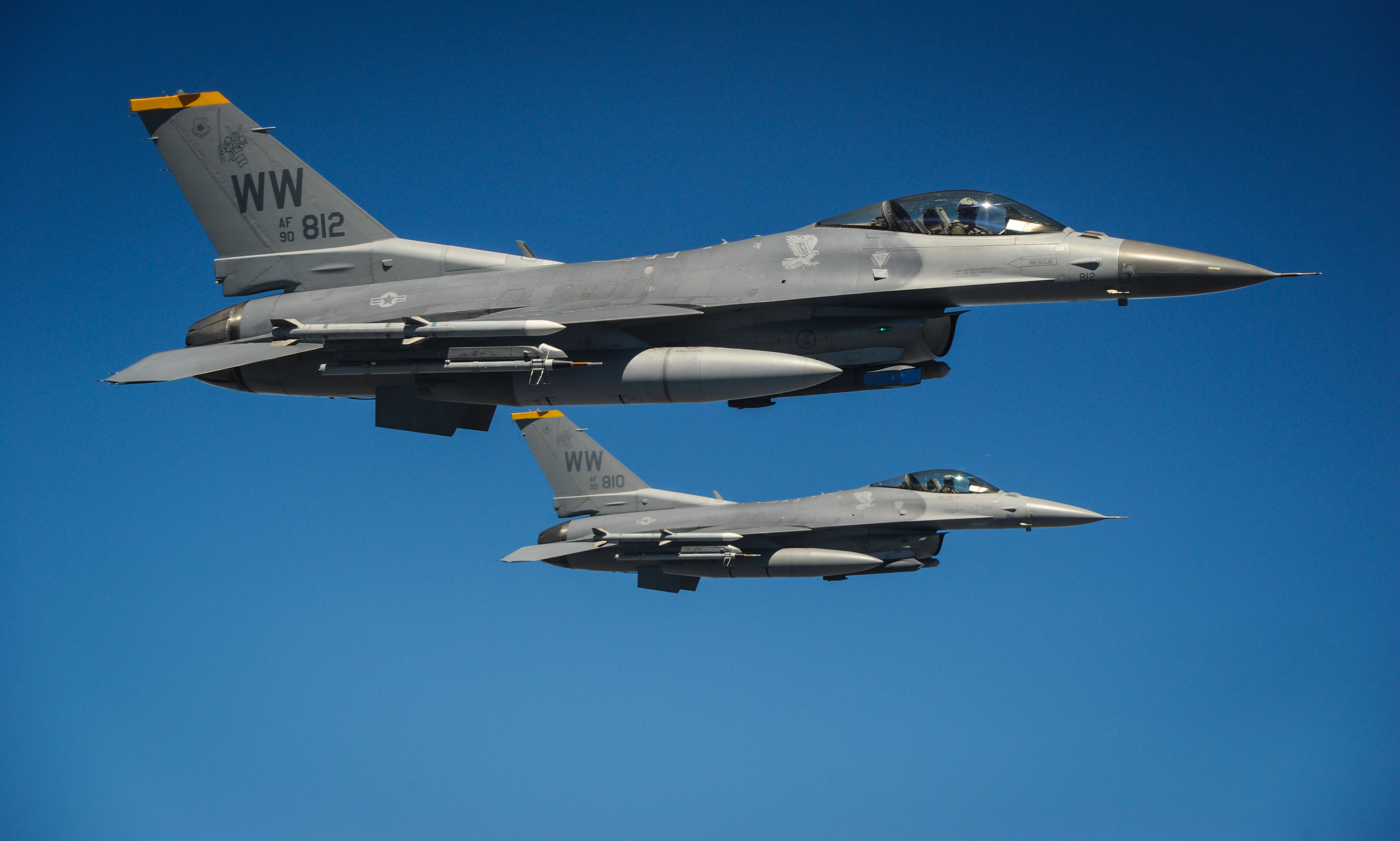
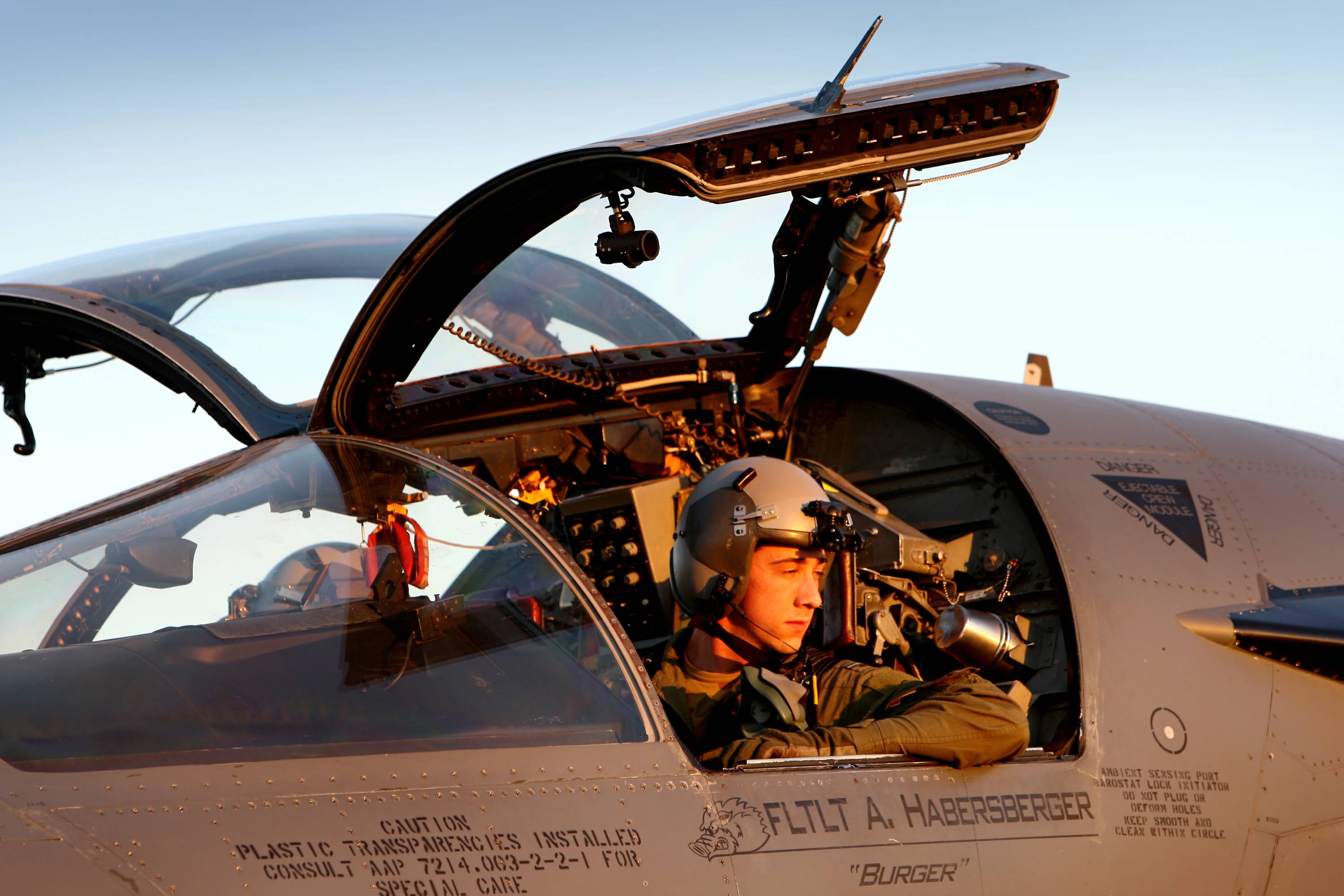
Another exercise veteran, Squadron Leader Paul Simmons, shared his memories of flying Hornets at Pitch Black in the mid-1990s. At that time, the ‘Classic’ Hornet was a very different beast, armed with infrared-guided AIM-9M Sidewinder missiles and the AIM-7 Sparrow radar-guided missile. His first involvement in the exercise came in 1994 at RAAF Base Tindal, having recently graduated onto the aircraft from No. 2 Operational Conversion Unit.
“The exercise was based on Defensive Counter Air (protect Australia from attacks) and Tindal was the center of the action. (There were) many memorable missions with some eye-opening night engagements against USMC (United States Marine Corps) Harriers and RAAF F-111s attacking at night and at low level.”
“My two most vivid memories are: Sitting at the end of Runway 14 at Tindal on Alert 3 (if given a scramble order, we had to be airborne in 3 minutes) as Number Two to Binny.”
“It was late afternoon and we had been there for an hour, all was quiet and I was calm. Suddenly we received the scramble order as a low-level attack on Tindal had been detected 40 nautical miles northwest of the field. The heart gets pumping really quickly — start the left engine and scramble. We did a formation take-off, and then at a couple of hundred feet Binny [Air Chief Marshal Mark Binskin (retired), Simmons’ former flight lead] waves me away into tactical formation. We set the switches in the cockpit to fight, heading south briefly before turning hard back to the north to engage. We spent the 30 minutes in an old-school crazy fight against many low-level strikers and some escorts, killing most of the attackers before running out of weapons and fuel and landing back at the base a short time later.”
“The other memory is — it was night, and we were flying in the standard very dark Northern Territory sky — many years before we had Night-Vision Goggles. We were sitting in a CAP (Combat Air Patrol) with our radars searching the inky blackness for signs of attacking forces. We detected low-level F-111s and headed west in afterburner to engage as quickly as we could. Trying to hang on to visual contact with Binny while also working the radar and shooting at low-level contacts and their escorts at height at night is busy, to say the least. I lost some heartbeats that night but stayed visual and shot a couple of bad guys… which for a new wingman was a win!”
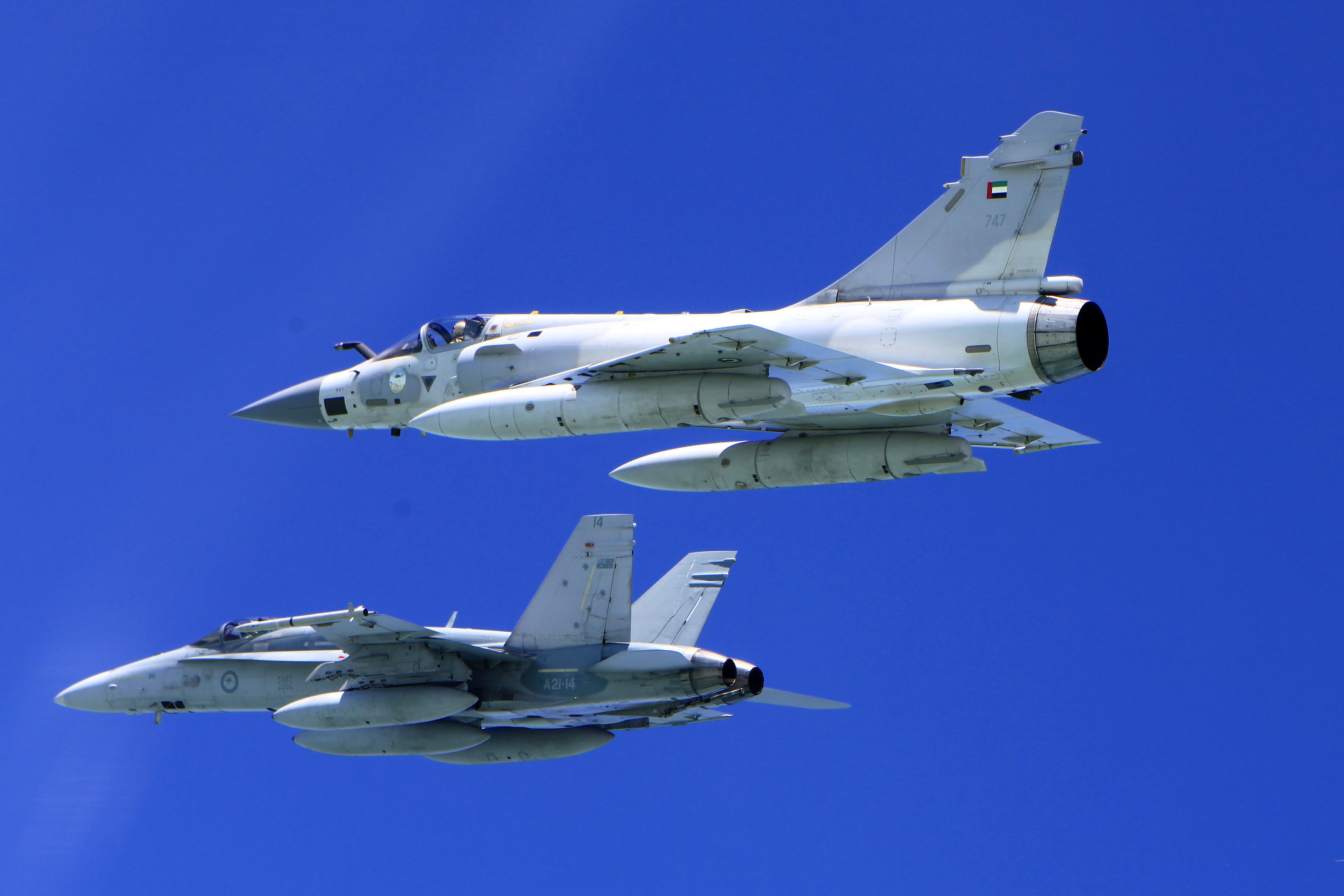
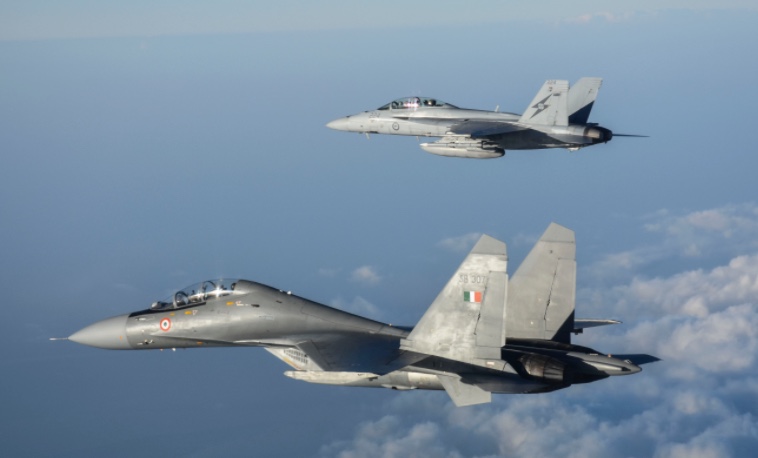
By the time Exercise Pitch Black 96 came around, Squadron Leader Simmons was at No. 3 Squadron, leading a four-ship formation of Hornets.
“We were tasked as the ‘Kamarian Orange Forces’ and flying out of Darwin under the command of Air Marshal Geoff Shephard (retired), who was then Officer Commanding No. 82 Wing. We were the bad guys, and included United States Air Force B-52s and F-16Cs, and RAAF F-111s. We were flying against RAAF F/A-18s of Nos. 75 and 77 Squadron, USAF F-15Cs, who were supported by a USAF E-3C Airborne Early Warning and Control System (AWACS).”
“We were escorting two B-52s where we started over the Joseph Bonaparte Gulf at high level, with four F-111s, eight F-16Cs, and six F/A-18s. On the Mission Commander’s word, we had the B-52s and F-111s descend steeply to low level while putting out a ton of chaff (radar countermeasures), escorted by my four F/A-18s, while the rest of the fighters covered all altitudes from 50,000 feet to low level. It was quite a mess for the defenders to sort out and stop. Ingressing at low level on the wing of two B-52s with their wings ‘flapping’ due to the heat and thermals, while targeting and shooting defenders, remains quite a memory.”
Part of the Orange Force tactics for Exercise Pitch Black 96 involved ‘shooting down’ the Blue Force E-3C AWACS, denying the Blue Force of a vital force-multiplier. Simmons recalled the game plan for that particular sortie:
“We would press in as usual, but stay for a while longer as a distraction while one of our F-16s in a ‘clean and fast’ configuration (they had taken all the radar reflecting and drag-inducing tanks, pylons and missiles off) would do a tactic and then get to very low altitude and spring through the defenders and try and ‘kill’ the E-3. The tactic worked a charm, and the F-16 got through and killed the E-3, which was south of Tindal, numerous times before being shot and recovering extremely high and slow back to Darwin with little fuel remaining.”
“In retrospect, it was not the best mission to plan such a move with the VIPs on board and it was even less well-received as the F-16 joined on the wing of the E-3 and kept mercilessly calling the ‘kill’ on the Blue Force radio frequency. Later that day the E-3 landed in Darwin, and we all got out on the tarmac cheering our victory as it taxied by. I still remember Binny giving me the ‘disappointed dad’ look in the bar that night, trying to explain to me why despite the great tactical execution, of all the days, today was not the best and we made the ‘sell’ he was part of all the harder.”
Simmons is just one of many past exercise participants to have contributed to a massive collection of brief memoirs, all of which you can find here. They include plenty of memories of the RAAF’s iconic F-111s making noise and rocketing low over the ground, two things they are fondly remembered for.
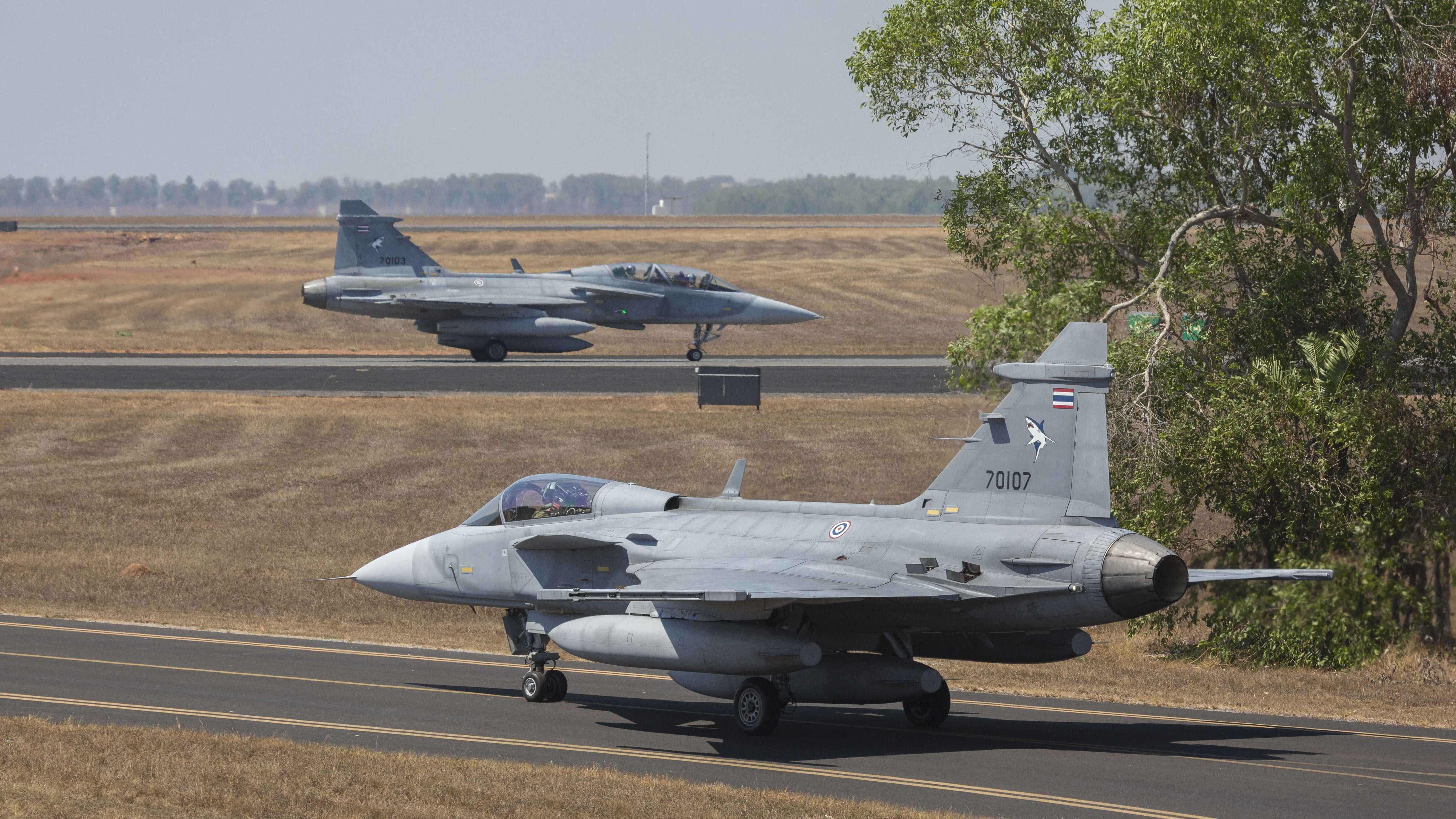

Videos posted by the RAAF bring to life some of the other highlights of Pitch Black from the mid-to-late 1990s, including air-to-air refueling of F-111s, F/A-18s, and Singaporean F-16s. You’ll also see footage of the Republic of Singapore Air Force’s A-4SU Skyhawks (including the unique twin-canopy trainer versions); ground movements and takeoffs from RAAF F/A-18As, F-111s, and USAF F-15Cs; RAAF Boeing 707s, plus the RAAF’s twin-turboprop HS748 tactical transport tackling a dirt runway.







And, if that’s still not enough to ‘scratch that itch’, the RAAF public affairs crew have also put online all editions of the RAAF News newspaper from 1961 to 1997.
All told, we’re being treated to a real treasure trove of nostalgic Pitch Black content.
Contact the author: thomas@thedrive.com
